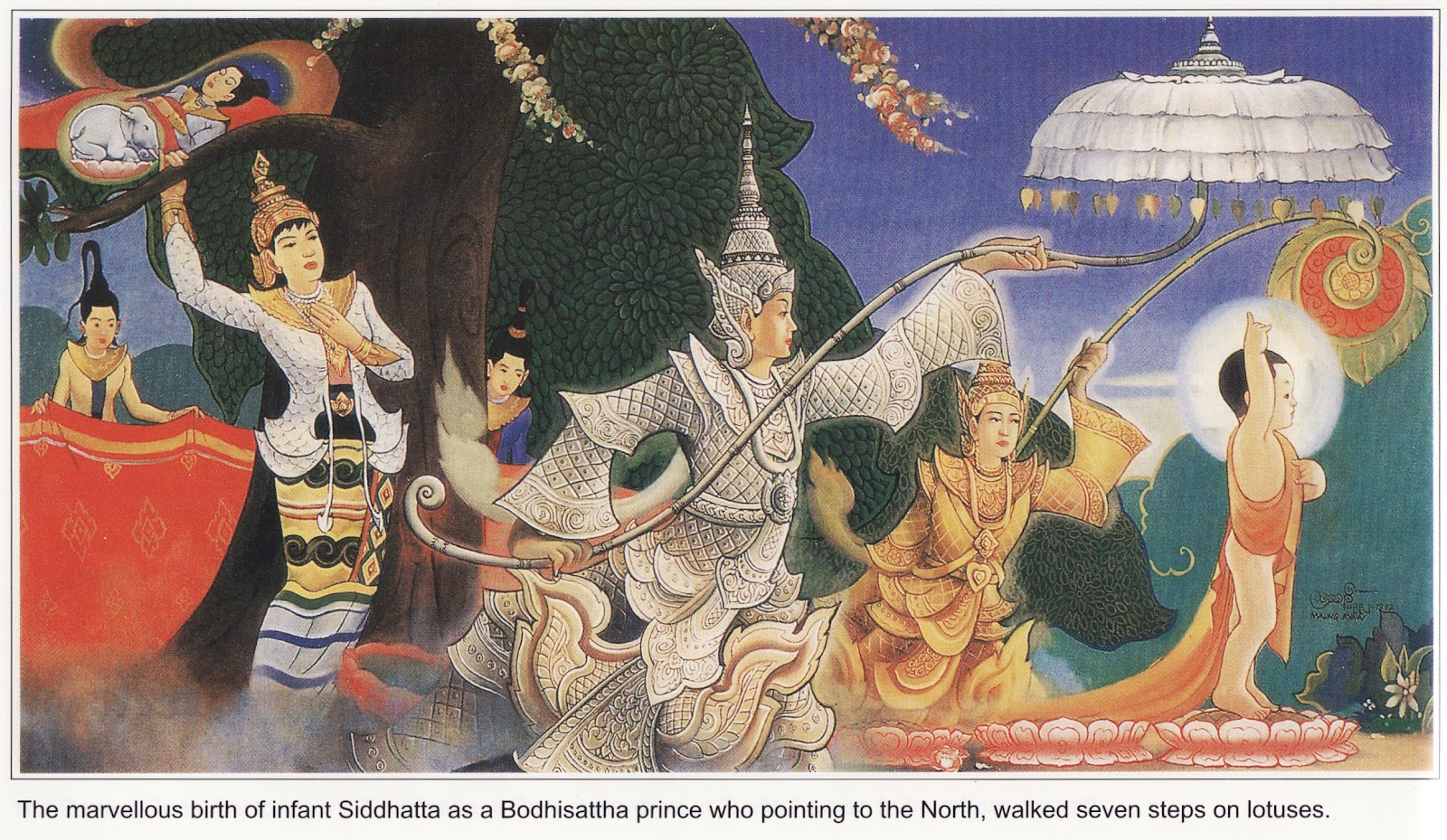U Lakshman Rao
On a serene full-moon day, as the Vasantha season graced the land with fragrant blossoms, gentle breezes, and birdsong, Queen Mahamaya gave birth to a son in the Lumbini Grove near the Himalayas. The child, named Siddhartha, was born while she was journeying to her parental home. Tragically, Queen Mahamaya passed away seven days later, and her sister, Gomati, lovingly raised the infant. Siddhartha grew amid the luxuries of palace life and received an education befitting a prince. At the age of sixteen, he married Yashodhara.
As Siddhartha matured, he became increasingly aware of human suffering. Four profound encounters shook his sheltered life: an aged man weakened by time, a sick man in distress, a corpse mourned by grieving kin, and a serene ascetic. These sights awakened in him a desire to seek the truth beyond the illusions of worldly pleasures. He recognized the fleeting nature of youth, health, and life, and this awareness stirred a deep compassion that led him to renounce his royal life. One night, he left the palace quietly, glancing one last time at his sleeping wife and infant son.
Determined to discover a path to freedom from suffering, he studied under two renowned ascetics and practiced intense meditation. However, finding their teachings inadequate, he continued his quest alone. He reached Nerenjara near Gaya, where he subjected himself to severe austerities. Living on roots and sleeping on the bare ground, his health deteriorated. Yet his mind remained resolute, searching for true liberation.
Eventually, Siddhartha realized that self-mortification was not the way. Restoring his strength, he sat under the Bodhi Tree and engaged in deep mindfulness, focusing on his breath. Through disciplined meditation, he purified his mind of illusion and anxiety. On a full-moon night, at the age of thirty-five, he attained enlightenment. He became the Buddha—the Awakened One.

Resolving to share his insight, the Buddha traveled to Varanasi and delivered his first discourse to five ascetics. Thus began his mission of spreading the Dharma—the truth he had realized. He traveled from place to place, teaching the Four Noble Truths and the Eightfold Path, offering a way out of suffering. He welcomed all people, regardless of caste, class, or gender, and treated everyone with dignity. His movement uplifted the status of women, promoted equality, and discouraged animal sacrifice, superstition, and sectarian conflict.
The Buddha rejected all claims to divinity. He neither declared himself a god nor a divine incarnation. He was a human being who achieved supreme wisdom and purity through personal effort, unaided by any teacher or supernatural force. He demonstrated that enlightenment was within the reach of anyone who earnestly pursued it with discipline, insight, and compassion.
He encouraged self-reliance and critical inquiry, not blind faith. His teachings were free from secrecy and coercion. He never appointed a successor, urging his followers instead to be a light unto themselves and follow the path with intelligence and reflection. His emphasis on mindfulness, moral conduct, and wisdom became the foundation of the Buddhist path.
Buddha’s insights were not abstract philosophies but practical guidelines for living. He taught that suffering arises from craving, and by eliminating craving, one can attain liberation. He understood that life is in constant flux, and true happiness comes from mental discipline, not from sensory pleasures. He emphasized the importance of thought, as all actions begin in the mind. Good thoughts lead to peace and happiness, while negative ones bring harm and suffering.
He highlighted the power of love over hate. Hatred binds and blinds, while love liberates and unites. He praised restraint, patience, compassion, and harmlessness. Right speech, mindful actions, and a calm mind were essential virtues in his view. Speech should uplift, not wound; thoughts should be noble, not selfish. Character, he taught, must be built through self-effort, mindfulness, and right understanding.
The Buddha valued calmness as a sign of strength, not weakness. A calm mind remains undisturbed amidst life’s challenges and leads to true insight. Mindfulness, he taught, should be present in all activities—walking, sitting, speaking, or eating. Control of the mind is the key to lasting happiness and the highest virtue.
After forty-five years of teaching, the Buddha passed away at Kusinara at the age of eighty. His final legacy was a path of wisdom, compassion, and freedom—a path open to all who seek truth. His teachings, grounded in human experience, continue to inspire millions across the world. He proved that the potential for enlightenment lies within each individual and that through self-awareness and right conduct, one can transcend suffering and attain lasting peace.







